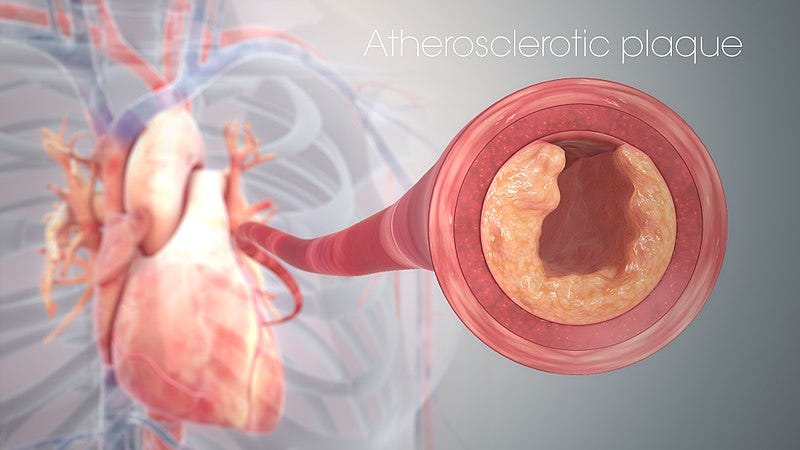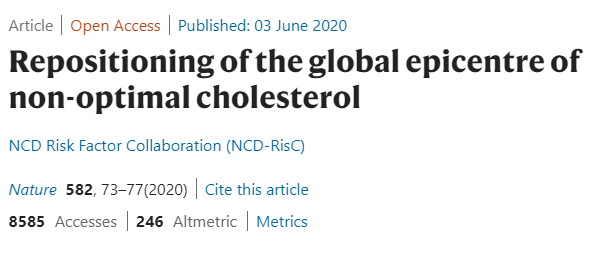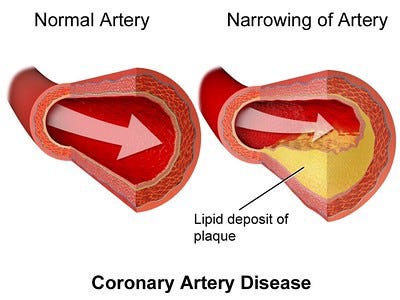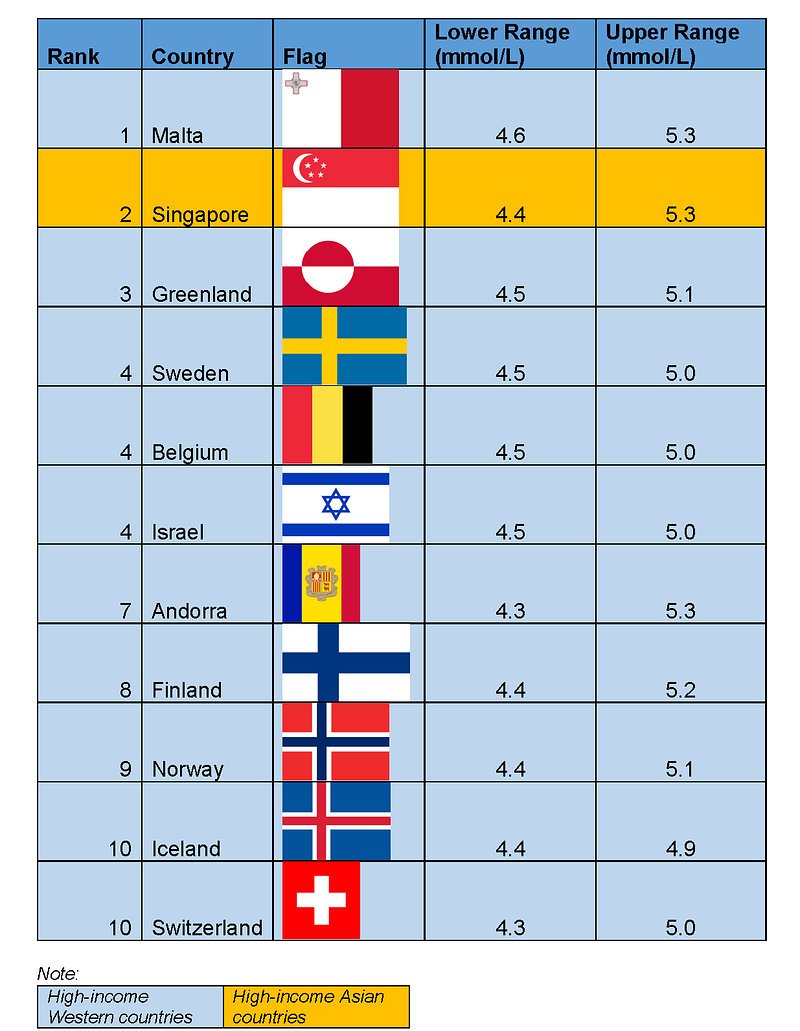A Shift in Global Cholesterol Rankings: What's Behind It?
Written on
Understanding the Global Shift in Cholesterol Levels
A recent comprehensive study on cholesterol levels has been conducted by the NDC Risk Factor Collaboration (NDC-RisC), a group of researchers from various nations collaborating with the World Health Organization (WHO). They investigated global trends in non-communicable diseases (NCDs) using sophisticated statistical techniques, analyzing data from national epidemiological surveys spanning over 200 countries from 1980 to 2018. Their findings indicate a remarkable decline in cholesterol levels in affluent Western nations.

This update will cover:
- The science behind cholesterol and its key types.
- The trends in cholesterol levels across different nations.
- Possible explanations for these trends.
You might be surprised to learn that the USA has not ranked in the top 10 for high cholesterol since 1980!
The Science of Cholesterol
Cholesterol in our blood can be categorized based on its density, which includes:
- High-density lipoprotein (HDL) cholesterol
- Intermediate-density lipoprotein (IDL) cholesterol
- Low-density lipoprotein (LDL) cholesterol
- Very-low-density lipoprotein (VLDL) cholesterol
The VLDL, LDL, and IDL types are collectively referred to as non-HDL cholesterol. This type of cholesterol tends to deposit in blood vessels, leading to blockages when combined with substances like calcium, proteins, and immune cells. Such blockages can result in coronary artery disease if they occur in heart arteries or strokes if they occur in the brain.

Conversely, HDL cholesterol, often termed “good” cholesterol, plays a crucial role in removing excess cholesterol from the bloodstream and transporting it back to the liver for processing. This reverse cholesterol transport mechanism is vital for maintaining cardiovascular health. Interestingly, HDL cholesterol levels are not always the best predictors of cardiovascular risk when compared to non-HDL cholesterol levels.
The Rise and Fall of Cholesterol Levels Globally
In the 1980s, average cholesterol levels in high-income Western nations were notably elevated. However, the USA has surprisingly never made it into the top 10 for high cholesterol levels since 1980! The following table illustrates the top 10 countries with the highest recorded non-HDL cholesterol levels around 1980:

During the 1980s, high non-HDL cholesterol levels predominantly affected affluent Western nations. Notably, the USA had a non-HDL cholesterol level around 3.8–4.2 mmol/L during that time, which was significantly lower than the levels seen in other countries.
Fast forward to 2018, and the landscape has changed dramatically. The following table lists the top 10 countries with the highest non-HDL cholesterol levels recorded in that year:

To put these numbers into context, the optimal non-HDL cholesterol level is 3.37 mmol/L. The marked improvement in cholesterol levels from 1980 to 2018 indicates a global success in managing non-HDL cholesterol, with high-income Western and many European nations showing significant improvement.
While some nations in Oceania and Southeast Asia have entered the top 10, their non-HDL cholesterol levels are not as alarming as those recorded in the 1980s. Southeast Asian countries, in particular, have seen the most significant increase, averaging +0.23 mmol/L per decade, while Western and European nations have experienced declines. The USA’s non-HDL cholesterol levels were around 3.1–3.5 mmol/L in 2018, reflecting a positive trend.
Exploring the Causes of Cholesterol Level Changes
In Western countries, efforts to reduce fat intake—especially saturated and trans fats—have been successful. Conversely, as Southeast Asian nations develop economically, dietary habits have shifted towards higher calorie consumption and increased intake of highly processed foods. This change explains why some Southeast Asian countries ranked high in cholesterol levels in 2018.
The NDC-RisC also proposed that the increased use of statin drugs in high-income countries may have contributed to the decrease in non-HDL cholesterol levels. However, the high cost of these medications has limited their availability in many middle-income Southeast Asian nations.
As a Southeast Asian, I observe that while people may afford processed foods, they often cannot access healthier options or the necessary medical care. A diet rich in fruits, vegetables, and healthy fats is linked to better cardiovascular health, yet many perceive these options as too expensive or lack knowledge about cost-effective purchasing strategies.
Southeast Asians are significant consumers of palm and coconut oils, which is concerning since coconut fat, despite being marketed as “healthy,” contains over 85% saturated fat and can raise LDL cholesterol levels more than other plant oils. Even though it may boost HDL cholesterol, this increase isn’t necessarily indicative of reduced cardiovascular risk when compared to non-HDL cholesterol.
To combat rising non-HDL cholesterol levels, there needs to be a stronger emphasis on nutrition education in Southeast Asia. Relying solely on costly medications is not sustainable; statins merely inhibit the conversion of saturated fats into cholesterol without addressing dietary root causes.
Concluding Thoughts
The global landscape of cholesterol levels is shifting. There has been notable success in high-income Western and European countries, but attention must now turn to regions like Oceania and Southeast Asia. Addressing dietary habits is crucial, as merely blocking cholesterol production is not a comprehensive solution.
Thanks for reading!
If you found this article insightful, you might also like:
- Is Saturated Fat Bad For Heart? Debates And Consensus.
- Two Common Mistakes Turn A High-Protein Diet ‘Junky’. Science Explains.

This debate features experts discussing the connection between seed oils and heart disease, providing valuable insights into dietary fats.
Mike O'Hearn shares his strategies for maintaining peak performance without relying on supplements or handouts.